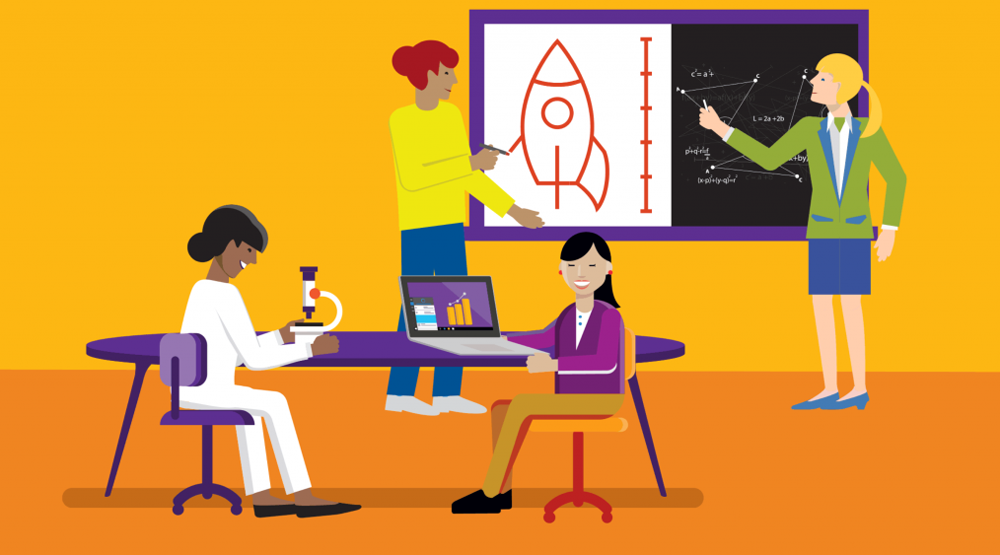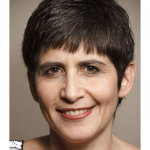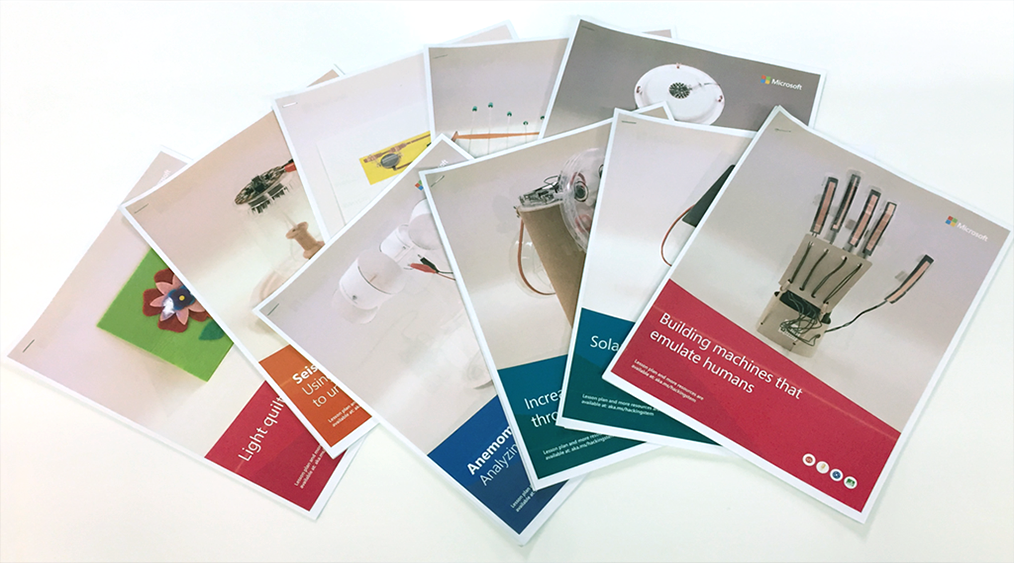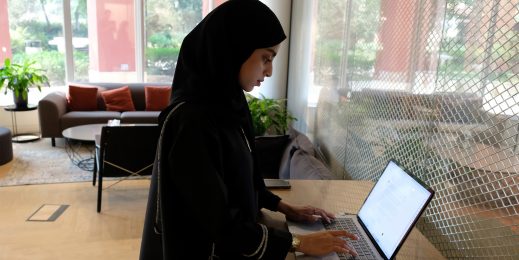
Encouraging more girls and young women to follow their passion
Changing the face of STEM
Encouraging girls to engage in STEM subjects has never been more important. By 2020, there could be a shortage of 500,000 digital workers, but less than one in three of the current ICT workforce is female.
Last year, Microsoft’s research revealed that young women in Europe lose interest in STEM by the time they’re 15 years old. Following this, a further study showed that girls in the US are lacking the support systems around them to thrive.
Overall, the research revealed two actionable insights – a direct link between a girl’s creativity and her interest in STEM and the important part that role models play in inspiring European girls and young women to pursue STEM studies and careers.
As STEM skills are playing an increasingly important role in shaping the European economy, STEM education – and encouraging more girls and young women to pursue STEM interests – is vital.
When it comes to gender balance amongst European students of science, technology, engineering or mathematics (STEM), men still outnumber women. There are almost four times more men than women in Europe taking ICT-related studies and worldwide. However, getting more girls to enter STEM fields isn’t a simple task, and it’s one that we must all work together to solve,
Below, you’ll find various resources, including Microsoft’s research findings, discussions, inspirational profiles and resources, all aimed to shed light to how we can help change the face of STEM.
Why don’t European girls like science or technology?
Research by Microsoft has revealed that most girls become interested in STEM subjects at the age of 11-and-a-half but this starts to wane by the age of 15. Two key reasons for this decline in interest are the lack of female role models and the lack of practical hands-on experiences that can relate STEM subjects to real-world use cases. More than half of respondents also felt that they would feel more confident pursuing a STEM path if they knew that men and women were equally employed in STEM professions.
If we want girls in STEM, we have to inspire them
What inspired you as a child? Was it the first time you saw a pianist’s fingers effortlessly create an enchanting melody? Perhaps it was the moment you saw lithium reacting with water in a science lesson. Or maybe it was an Olympic athlete from your home town, winning a gold medal right before your eyes. No matter what path we choose in life, it’s impossible to ignore the importance and formative effects that inspiration – and ultimately, role models – have had on us all.
Why do girls lose interest in STEM?
Nobody was going to stop her. Certainly not the other students who might make fun of her for raising her hand in class, repeatedly, to ask questions. It was maths, and it was hard. She asked the teacher a question. And then another. And then another. Every class, the drill was the same: Wash, rinse, repeat. “People used to even make jokes about me because I asked so many questions,” says Kennedy Sampson, now a high school junior in Maryland. “But I needed to understand it …I had to do what I had to.”
Girls in STEM: the importance of role models
The number of girls interested in STEM across Europe, on average, almost doubles when they have a role model to inspire them. The new findings show that in general, there is a clear link between role models and an increased passion for science, technology, engineering and maths subjects, with more interest in careers in these fields, and greater self-confidence. The results also highlight a concerning gap between the number of girls interested in STEM subjects and the number of young women with actual STEM careers.
STEM role models at Microsoft
Resources
Microsoft Innovative Educators
MIE Experts are part of an exclusive program created to recognize global educator visionaries using technology to pave the way for better learning and student outcomes. MIE Experts help shape the future– they work hand-in-hand with Microsoft to lead innovation in education, advocate for the effective use of technology in the classroom, share ideas with a global network of peers, and become thought leaders in the edtech space.





























